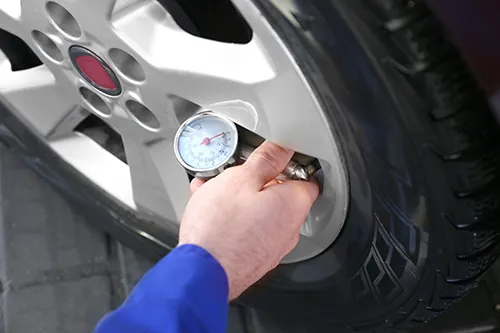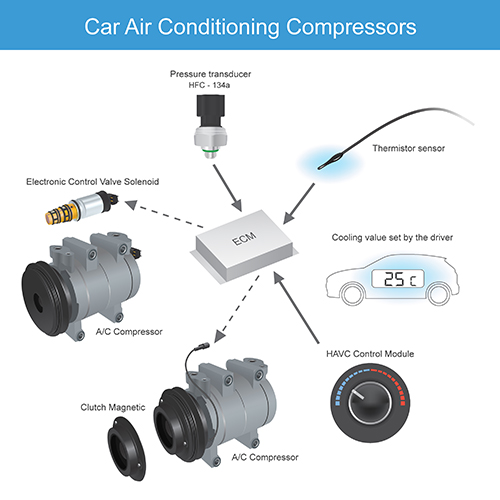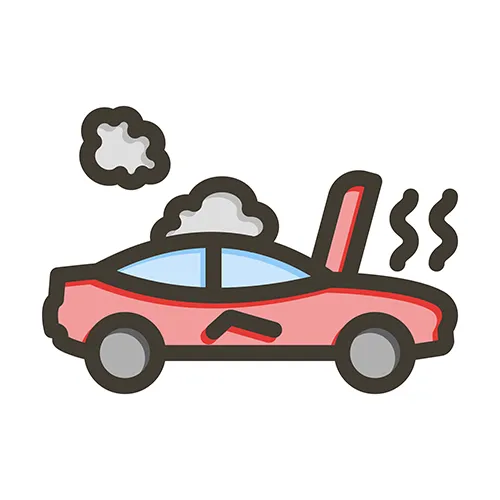As the temperature rises and summer approaches, keeping your vehicle in top condition becomes more important than ever. Hot weather can put extra strain on your car’s engine, tires, and other vital components, increasing the risk of breakdowns and costly repairs. Whether you’re planning a road trip or simply commuting in the heat, knowing how to care for your vehicle during scorching days can save you time, money, and stress. In this blog post, we’ll share the top tips to keep your vehicle running smoothly in hot weather, from maintaining proper coolant levels to checking your tires and battery.

Regular engine coolant checks and maintenance are essential to keep your vehicle running smoothly, especially during hot weather. Commonly known as antifreeze, the engine coolant is essential for controlling the temperature of your engine by absorbing heat and stopping it from overheating. Without the proper level and mixture of coolant, your engine can quickly become damaged due to excessive heat.
In hot weather, your engine faces additional stress, making it even more important to ensure the coolant system is functioning optimally. Frequently inspect the coolant level in the reservoir and replenish it with the specified coolant type whenever it falls below the required level. It’s also important to inspect the coolant for any signs of contamination or discoloration, which can indicate that it needs to be flushed and replaced.
Scheduling routine maintenance for your cooling system — including checking hoses, the radiator, and the thermostat — can help prevent leaks or blockages that might cause overheating. By staying proactive with coolant checks and maintenance, you’ll protect your engine from heat damage, improve your vehicle’s performance, and avoid costly repairs down the road.
Keeping Your Tires Properly Inflated

To keep your tires properly inflated, it’s important to check the pressure regularly—ideally once a week and before long trips. Use a reliable tire pressure gauge and compare the readings to the manufacturer’s recommended PSI, which you can find in your vehicle’s owner manual or on the sticker inside the driver’s door. Remember, checking tire pressure when the tires are cold (before driving) will give you the most accurate measurement.
Tires that are inflated to the correct pressure provide enhanced grip, superior handling, and lower the chances of blowouts during extremely hot conditions. Taking a few minutes to maintain the right tire pressure can save you money on fuel and repairs, while keeping you safe on the road during the hottest months of the year.
Monitoring and Maintaining Battery Health
Your vehicle’s battery plays a crucial role in ensuring reliable starts and powering essential electrical components. In hot weather, however, batteries are put under extra stress, which can shorten their lifespan and increase the likelihood of unexpected failures. High temperatures accelerate the chemical reactions inside the battery, causing it to lose water more quickly and potentially leading to overheating or corrosion.

Additionally, ensure that your battery is securely mounted to prevent vibrations that could damage internal components. If your vehicle is older or the battery is over three years old, consider having it tested by a professional to check its charge capacity and overall health.
Whenever feasible, aim to park your vehicle in a garage or shaded spot to shield the battery from direct exposure to sunlight and intense heat. Taking these simple steps will help you avoid battery-related breakdowns and keep your vehicle running smoothly throughout the hottest months of the year.
Timely Inspection and Replacement of Engine Oil
The engine oil is vital for ensuring your vehicle’s engine operates efficiently, particularly in hot conditions. Elevated temperatures accelerate the deterioration of engine oil, diminishing its capacity to lubricate and cool the engine parts properly. This degradation can cause increased wear, overheating, and severe damage to the engine. To avoid such issues, it is important to frequently monitor the oil level and its condition. Check the dipstick for indications like darkened, contaminated oil or insufficient oil levels, signaling the need for an oil change. Moreover, opting for premium synthetic oils that resist high heat can offer enhanced protection. Conducting regular oil changes is key to sustaining optimal engine function and prolonging your vehicle’s lifespan throughout the scorching summer periods. Never neglect this critical maintenance task when getting your car ready for hot weather driving.
Ensuring Air Conditioning System Efficiency

Additionally, replace or clean the cabin air filter as recommended in your vehicle’s manual. When a filter becomes clogged, it limits the airflow, causing the A/C system to exert more effort and use additional energy. It’s important to operate the A/C system occasionally, even during colder seasons, to ensure the compressor seals remain lubricated and avoid drying.
Finally, park your car in the shade or use sunshades to reduce the heat buildup inside your vehicle. This simple step helps your A/C cool the cabin faster and reduces overall strain on the system, ensuring it stays efficient throughout the hot season. By taking these measures, you’ll enjoy a refreshing ride no matter how high the temperature climbs.
Inspecting and Replacing Belts and Hoses
Belts and hoses play a crucial role in keeping your vehicle’s engine running efficiently, especially during hot weather when heat can accelerate wear and tear. The constant high temperatures cause rubber components like belts and hoses to become brittle, crack, or even break down unexpectedly. Regularly inspecting these parts can help you avoid sudden breakdowns or costly repairs.
Start by checking belts for signs of fraying, cracking, or glazing (a shiny, hardened surface), which indicate they are worn out and need replacing. Similarly, examine hoses for any soft spots, bulges, leaks, or cracks. Pay special attention to the radiator and heater hoses, as these carry vital coolant to and from the engine.
If you notice any damage or signs of deterioration, it’s best to replace the belts and hoses promptly. Many vehicle manufacturers recommend replacing these components every 60,000 to 100,000 miles, but hot weather conditions might require more frequent attention. Keeping belts and hoses in good condition ensures your engine stays cool and runs smoothly, protecting your vehicle from overheating during those scorching summer drives.
Avoiding Overheating: Signs and Prevention

To prevent overheating, regular maintenance is key. Make sure your coolant levels are topped up and that the coolant itself is in good condition—flushing and replacing it as recommended by your vehicle’s manufacturer. Inspect your radiator and hoses for any signs of damage or leaks, and confirm that the radiator fan is operating correctly. On extremely hot days, try to avoid heavy traffic or stop-and-go driving, as this can put extra strain on your engine. If possible, park in shaded areas or use sunshades to reduce heat buildup inside your car. Taking these precautions will help keep your vehicle running smoothly and reliably, even in the hottest conditions.
Scheduling Routine Professional Inspections
Regular professional inspections are essential to ensure your vehicle stays in top condition, especially during the intense heat of summer. While it’s important to perform basic maintenance checks yourself, having a trained mechanic thoroughly examine your car can help identify hidden issues before they become costly problems. During these inspections, professionals will assess crucial components such as the cooling system, air conditioning, tires, brakes, and fluids—all of which are particularly vulnerable to high temperatures. For example, overheating engines or worn-out coolant can lead to breakdowns, while underinflated tires increase the risk of blowouts in hot weather. By scheduling routine inspections, you not only enhance your vehicle’s performance and safety but also extend its lifespan, giving you peace of mind as you navigate through the hottest months of the year. Make it a habit to book these check-ups well in advance of summer or at the first sign of trouble to keep your ride running smoothly no matter how high the mercury climbs.





